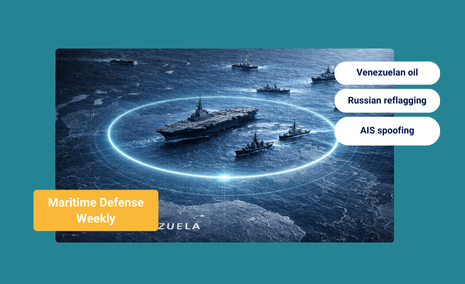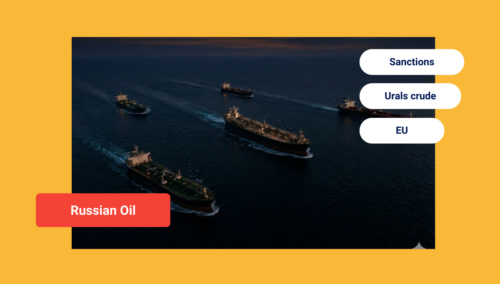
Transit Time
What is Transit Time?
Transit time in the maritime industry refers to the duration it takes for a shipment to travel from the port of origin to the port of destination. This time frame includes the entire journey, covering loading, sailing, and unloading processes. It is a key factor in estimating the time of arrival and is crucial for logistics planning, cost estimation, and supply chain management.
What Factors Impact Transit Time?
Several factors impact ocean freight transit time in the maritime industry, each influencing the duration of shipments in various ways:
Several factors influence transit time in the shipping and logistics industry. Understanding these factors is essential for optimizing supply chain efficiency and meeting delivery expectations. The primary factors affecting transit time include:
1. Geographical distance: the most straightforward factor is the physical distance between the origin and destination. Longer distances naturally require more time for goods to travel.
2. Mode of transportation:
- Air freight: generally the fastest but also the most expensive mode of transport, suitable for high-value or time-sensitive shipments
- Sea freight: slower compared to air freight but more cost-effective for large volumes and heavy goods
3. Shipping routes:
- Direct vs. indirect routes: direct routes are faster, while indirect routes with multiple stops or transshipments can increase transit time
- Congestion and traffic: busy shipping lanes and port congestion can cause delays
4. Customs and regulatory procedures:
- Customs clearance: the efficiency of customs processes at borders can significantly impact transit times. Delays in customs clearance due to paperwork issues, inspections, or regulatory compliance can extend transit times
- Trade regulations: changes in trade policies, tariffs, and regulations can also cause delays
5. Port and terminal operations:
- Loading and unloading efficiency: the speed and efficiency of cargo handling at ports and terminals affect overall transit time
- Port infrastructure: well-equipped and modern ports can process shipments faster than those with outdated infrastructure
6. Weather and natural conditions:
- Weather events: severe weather conditions, such as storms, hurricanes, or heavy snowfall, can delay shipments
- Seasonal variations: certain seasons may bring adverse weather conditions or peak shipping periods that affect transit times
7. Carrier schedules and frequency:
- Service frequency: the frequency of carrier services on a particular route can impact transit times. More frequent services can offer shorter transit times
- Carrier reliability: the reliability and punctuality of the shipping carrier also play a crucial role
8. Supply chain and logistics management:
- Inventory management: effective inventory management and demand forecasting can reduce delays caused by stock shortages or overstocking
- Logistics coordination: coordination between various stakeholders in the supply chain, such as suppliers, carriers, and customers, is critical for minimizing transit times
Understanding and managing these factors can help businesses optimize transit times, improve supply chain efficiency, and better meet customer expectations.

How Does Shipping Time Factor into Supply Chain Management?
Shipping time directly impacts inventory management and customer satisfaction. Efficient shipping times allow companies to maintain leaner inventory levels, reducing the costs associated with storage and the risk of excess inventory. By optimizing shipping times, companies can enhance their order fulfillment processes, ensuring that products are delivered to customers promptly.
Shipping times influence the overall cost management within the supply chain. Longer transit times often lead to higher transportation and carrying costs, including fuel, vessel chartering, and warehousing costs. Shorter and more reliable shipping times enable companies to better manage risks associated with delays and disruptions, enhancing the resilience and responsiveness of the supply chain.
Effective shipping time management improves operational efficiency and strengthens the company’s ability to compete in the global market, by ensuring timely and cost-effective delivery of goods.
Measuring Transit Time
The duration required for goods to travel from one location to another, known as transit time, plays a critical role in a company’s supply chain management. The type of commodity being transported can also dictate how transit time affects the overall condition of the cargo.
Transit time is quantified in hours or days, representing the total time taken for cargo to move from point A to point B. Depending on the nature of the goods, various transportation methods such as ships, planes, trains, and trucks might be utilized.
The measurement of transit time can be detailed into several stages:
- Transit days: this encompasses the duration from the supplier’s warehouse to the port of origin, any storage days involved, the actual sailing time, and the time required to unload the cargo at the destination port, preparing it for customs clearance
- Clearance and delivery days (CDD): these include the number of days necessary for customs clearance and the subsequent delivery of goods to the customer’s premises
By breaking down transit time into these specific components, companies can more accurately manage and optimize their logistics processes.










